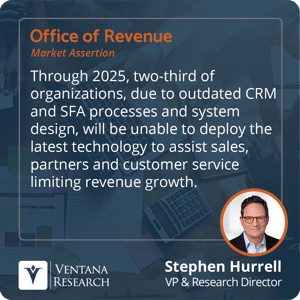There are stark reminders that all is not well in business-to-business sales and marketing land. Many organizations struggle to hit revenue targets, and individuals consistently fail to hit their quotas. Various reasons are put forward, but the more convincing argument is that buyer behavior has transformed over the years, requiring changes to the traditional way of engaging with B2B prospects and customers. Even Jon Miller, co-founder of Marketo, has acknowledged that the process on which he based Marketo functionality is no longer delivering in terms of buyer engagement, sales and hitting revenue targets.
The behavior of buying organizations and consumers has changed with the rise of the internet, widespread adoption of alternate pricing models such as subscription and usage pricing and a preference for remote buying. While there is yet no widespread replacement for the more traditional sales and marketing approach, there is an emerging focus on continuous go-to-market models as a more unified and iterative process compared to the old linear, lead-to-opportunity funnel model.
We are seeing strong indications of this break in the technology sector, but the root causes apply to many industries. Buyers are less inclined to be “sold” to and more willing to do their own research. Features and functions are of less interest than discussions about delivering value – not just initially but over the duration of an engagement. Buyers are looking for partners, elevating reputation and brand to priority characteristics customers include in their evaluation criteria.
Customers have expressed a desire to work with vendors who can partner over the engagement's length. Given the subscription model, this is a crucial point for vendors to understand. It is not just about the initial sale, nor just about an expansion opportunity. With renewals dependent on the perception of realized value – especially close to the date – it is incumbent on vendors to ensure that the product and service continue to deliver.
Yet current sales communication mechanisms assume messages are for new users. Subscription model messaging is really about “what have you done for me lately,” and vendor organizations need to recognize that outbound marketing and branding should be directed to existing – as well as new – customers. Creating an emotional attachment between seller and buyer has long been understood in consumer products, but less so for B2B sales, which are viewed as not being on the same emotional level as personal purchases.
When it comes to technology supporting these changes in buyer behavior, both organizations and vendors need to rethink the nature of what a customer relationship management system represents. As I wrote previously, broad artificial intelligence – and by this, I mean both predictive and generative AI – can alter this conversation to benefit buyers and sellers. At the core of commerce is a market, and markets evolve to become more efficient at matching buyers and sellers. CRMs could become a platform for the digitization of buying and selling all goods and services. However, they will need to change from being systems of records to being systems of active engagement.
In fact, due to outdated processes embedded in customer CRM implementations, two-thirds of organizations will be unable to deploy the latest technology through 2025, limiting assistance to sales, partners and customer service and restricting revenue growth. More insights can be found in my recent Analyst Perspective here.
assistance to sales, partners and customer service and restricting revenue growth. More insights can be found in my recent Analyst Perspective here.
Organizations should consider whether existing approaches to the lead-to-opportunity process truly reflect the reality of the current business model and how customers want to do business. Subscription and usage pricing models – in part or in whole – change the economics of customer profitability: Revenue from the customer is spread over the length of customer engagement. The customer does not become profitable until the break-even point. The focus should be on the overall customer experience and maintaining a sustained relationship that extends beyond the break-even point. Without this pursuit of revenue could result in business failure as profitability will remain elusive.
Given that the typical cost of new customer acquisition is much greater than selling to an existing customer, organizations need to rethink the approach to generating revenue. The traditional concept of skewing marketing and sales programs and playbooks towards new customers does not support today’s business economics. Knowing more about customers supports sustained engagement – who benefits and how products and services are used in the context of a specific organization, rather than an abstract ideal customer profile.
Regards,
Stephen Hurrell


 assistance to sales, partners and customer service and restricting revenue growth.
assistance to sales, partners and customer service and restricting revenue growth. 








